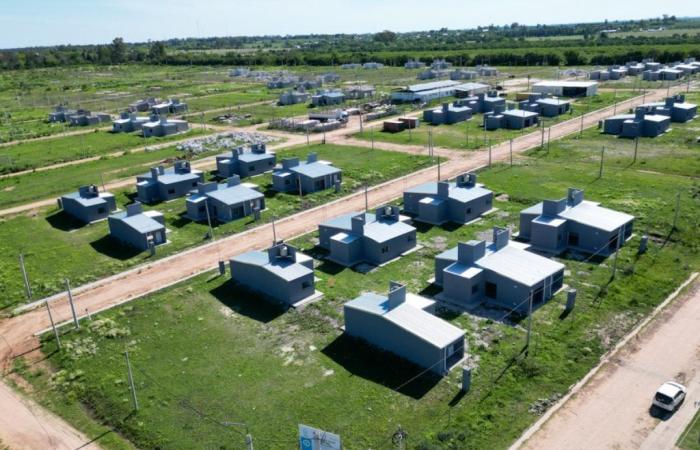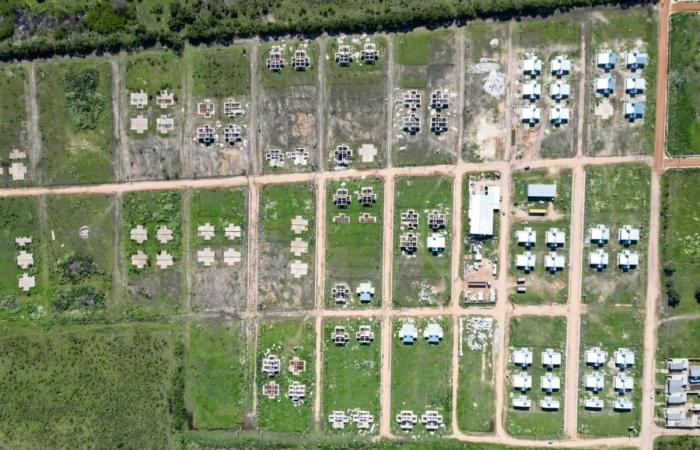By Luciano Peralta
Currently there are 54 families from Gualeguaychú who were drawn in the municipal program “Your first land”, but they were never awarded their lot with services. According to official data, during the first six draws (one in 2019; one in 2020; three in 2021 and one in 2022) 92 lots with services, belonging to the municipal Land Bank, were awarded in different areas of the city. Until then, everything is in order.
But, from the seventh draw (2022), until the tenth (in 2023 there were three), no more lots were delivered. These are 54 families who, although they were drawn to start paying for their land, are still waiting: for these families there is no assigned land.
The situation is a little more favorable for the 44 families grouped in the “Health and Housing” cooperative, made up of local health workers, who are waiting for their portion of land in the Las Ramas subdivision, located in the northwest area of the city. This is so because, on December 7, 2023, the Deliberative Council approved the ordinance that determines it: “Authorize the Municipal Executive Department to dispose of the lots with services suitable for urban residential use that the Municipality of San José de Gualeguaychú makes available to through the Land Bank in the northwest area of the city – current Las Ramas Housing Complex – in order to cover the housing needs of the 42 applicant families,” says Article No. 2 of Ordinance 12859/2023.
For both these 44 families and the 54 from “Your First Land,” the future of the Las Ramas subdivision is crucial. The new municipal management is aware of this, which is why they have been working for months on the organization of said lot, presented, in 2017, as the mega project of 525 homes.
Las Ramas: three governments, not a house delivered
The topic is not new, far from it. It went through three governments of different political signs: it was presented during the administration of Mauricio Macri; redesigned by Alberto Fernández and, now, going through the first months of Javier Milei’s government.
These are 25 hectares that were transferred by the CGT to be incorporated into the municipal Land Bank, “with the idea of prioritizing access to housing for the workers of our city,” said, at the time, the then mayor Esteban Martín. Piaggio.
In January 2019, the Portfolio of the then Minister of the Interior, Public Works and Housing of the government, Rogelio Frigerio, through his Secretary of Housing, Iván Kerr, signed an agreement with the Gualeguaychú mayor’s office for the construction of the 525 homes.
At that time, the government promoted the Public-Private Partnership (PPP) as a tool for housing construction, and the agreement in Gualeguaychú was highlighted as the second of its kind in the entire country. The “Integrated Urban Development Complexes” would promote social mixing: 40% of the units built (210) would be used for social housing, for lower-income families; while the remaining 60% (315) would go on sale to be awarded to families that qualify to acquire the then-new mortgage loan at UVA. Before, the Municipality would receive a percentage of the lots, for being the contributor of the land.
On June 4, 2019, the firm NELTEC SRL UTE (Temporary Business Union) began the works. But, with the change of government and the assumption of Alberto Fernández as president of the nation, things changed. The APP was reconfigured and the 315 homes eligible for credit became “lots with services”, while the national government committed, through the “Reconstruir” program, to building the 210 social interest homes. I would do it in stages: first 60, then 44, then 55 and so on.
Of that, there are currently 60 houses that are practically finished, but do not have services. That is a “gray point” stated by the Municipality, in dialogue with THE ARGENTINIAN: “There is something that is discussed, but is not documented, which is that the infrastructure of the entire property (water, sewer, electricity) should be taken over by the company, which would be paid with a percentage of those lots with services ”. So that it is understood: these 60 houses already have their successful bidders (all families belonging to the Municipal Housing Registry), but they do not have the services and the “link” or connection with the sewage, water and electricity networks requires a very high investment. big. Who finances it, the State or the private sector? That is one of the points that are currently being discussed: who and under what conditions.
Today the work is in the custody of the company. The idea of the Municipality is to reach an agreement as soon as possible to, on the one hand, obtain the percentage of lots that corresponds to it for providing the land and, then, be able to transfer them. Both to the “Health and Housing” cooperative, and to the pre-awardees of “Your First Land.”
All of the Executive’s chips are on this negotiation, since “there are very few” of the municipal Land Bank’s lands in condition to be delivered. This is so “for different reasons,” said a municipal official, who emphasized the lack of measurement of many of the lands and the complexity that this generates. The good news is that the work is not prosecuted, which, a priori, demonstrates the company’s willingness to reach an agreement and complete the work. “We are preparing technical issues to then address the issue politically,” said, from the Executive, a professional who closely follows the negotiations with NELTEC SRL UTE and who calls himself optimistic, although “we still have to wait.”







